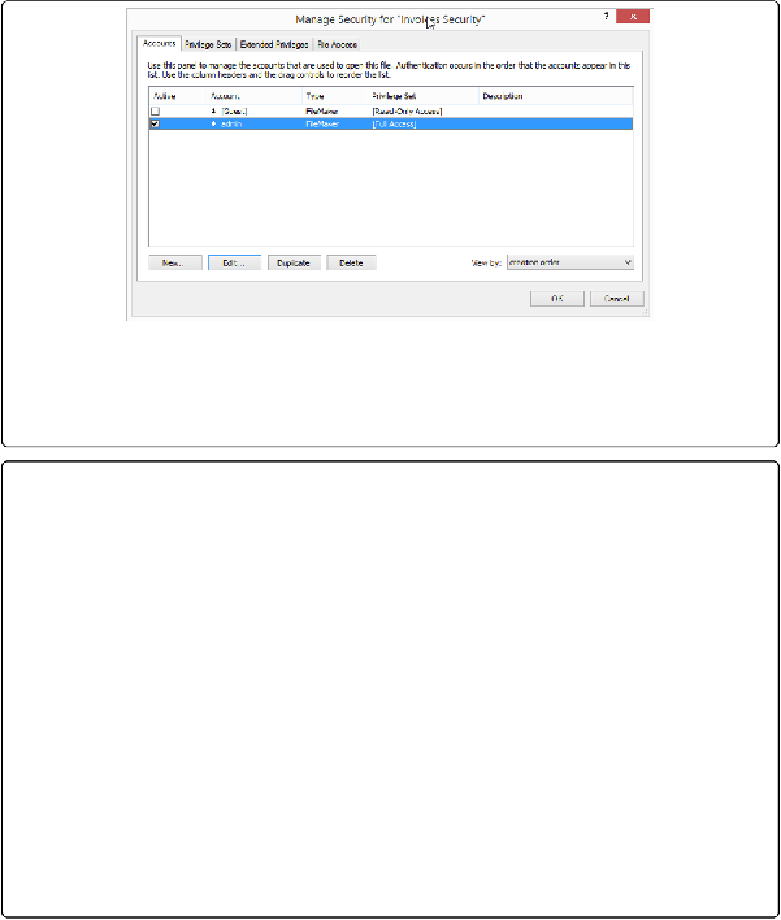Database Reference
In-Depth Information
Figure 18-14. The Accounts tab works a lot like the Privilege Sets tab. Click New to make a new
account, or select an existing account and then click Edit to change it. You can also duplicate or
delete the selected account. Every account has an Active checkbox, an Account name, a type, an as-
signed privilege set, and an optional description.
FREQUENTLY ASKED QUESTION: AUTOMATIC LOGIN
If I've been using the Admin account all this time, how come FileMaker never asked me to log in?
Does it just skip the authentication dialog box when some account has no password?
Actually, FileMaker has been logging in for you. Every new database is set up to log in automatic-
ally using the Admin account and a blank password. Once you give the Admin account a password
for a given database, automatic login stops. But you can set your database to log in with any account
automatically, or you can turn off automatic login entirely, which is a much more secure option.
The setting is behind the File→File Options command. When you choose this command, you see
the File Options dialog box. Turn off the “Log in using” checkbox to stop the automatic login pro-
cess. Or, you can type a different account and password in the appropriate box to log in with another
account. Finally, you can have FileMaker automatically log into the file using the guest account (see
the box on
The Guest Account
)
.
If you set your file to automatically log in with an account that doesn't have full access, including
the guest account, then you can't come back to this window to turn it off. You may think you've just
locked yourself out of your file completely, but you haven't. If you hold down the Shift key (Option
key on a Mac) while a file opens, then FileMaker asks you for an account name and password even
if the file is set to automatically log in.

